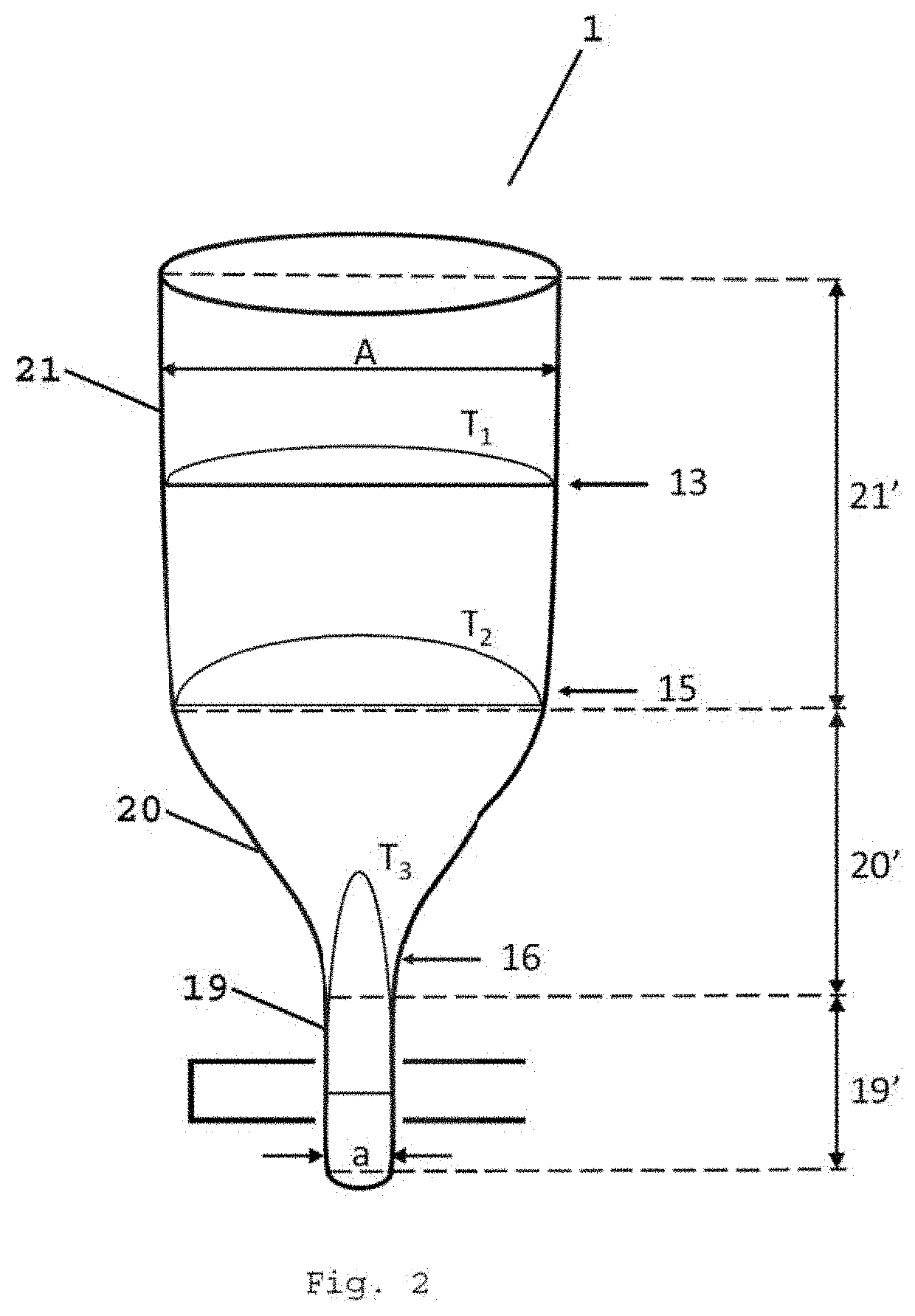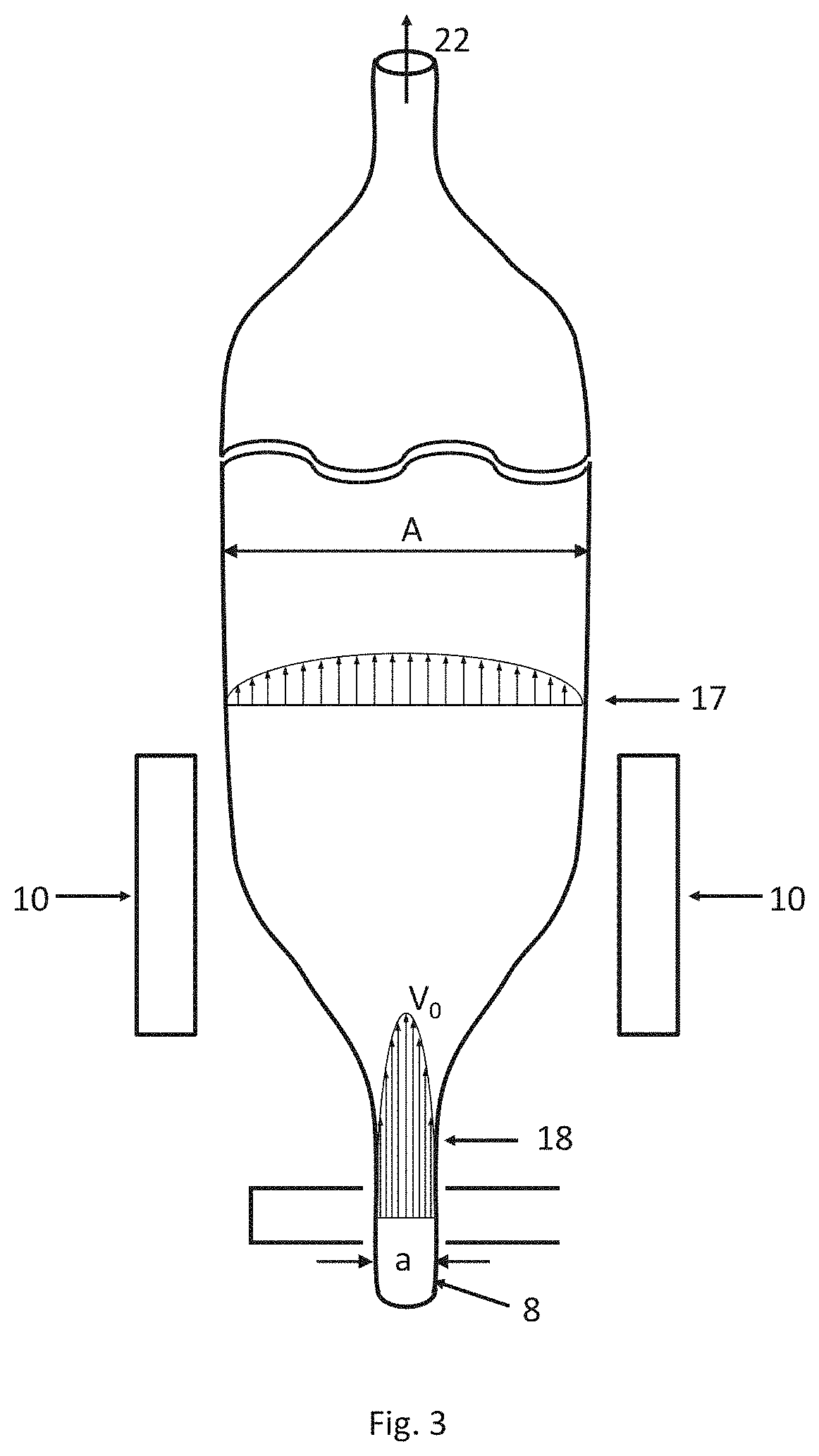Process, reactor and system for fabrication of free-standing two-dimensional nanostructures using plasma technology
a two-dimensional nanostructure and plasma technology, applied in plasma technology, chemical/physical/physico-chemical processes, gas-gas reaction processes, etc., can solve the problems of affecting the quality of plasma products
- Summary
- Abstract
- Description
- Claims
- Application Information
AI Technical Summary
Benefits of technology
Problems solved by technology
Method used
Image
Examples
examples
[0144]1. For the production of graphene with a production rate of more than 1 gram per hour, a plasma reactor formed by a quartz tube comprising a surface wave launching part (19) with an internal radius of 18.0 mm, a transient part (20), with an increasing internal radius, of 18.0 mm to 75.0 mm; and a nucleating part (21), with an internal radius of 75.0 mm, is used. First, a mixture composed of ethylene or acetylene as precursors, with an incorporation rate in the mixture of 8.3×10−6 m3 / s and argon as carrier gas, with a flow rate of 8.3×10−4 m3 / s, is produced. Flow rates are monitored by a controller coupled to two flow meters. Next, the said mixture formed by ethylene or acetylene and argon is introduced in stream regime (12) through a connection (14), using an injection unit (see FIG. 4), in an admission part (8) of the reactor, constituted by a quartz tube and installed in the surface wave launching part (19). Any other gas injection system capable of performing this function ...
PUM
| Property | Measurement | Unit |
|---|---|---|
| temperature | aaaaa | aaaaa |
| temperature | aaaaa | aaaaa |
| temperature | aaaaa | aaaaa |
Abstract
Description
Claims
Application Information
 Login to View More
Login to View More - R&D
- Intellectual Property
- Life Sciences
- Materials
- Tech Scout
- Unparalleled Data Quality
- Higher Quality Content
- 60% Fewer Hallucinations
Browse by: Latest US Patents, China's latest patents, Technical Efficacy Thesaurus, Application Domain, Technology Topic, Popular Technical Reports.
© 2025 PatSnap. All rights reserved.Legal|Privacy policy|Modern Slavery Act Transparency Statement|Sitemap|About US| Contact US: help@patsnap.com



